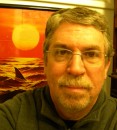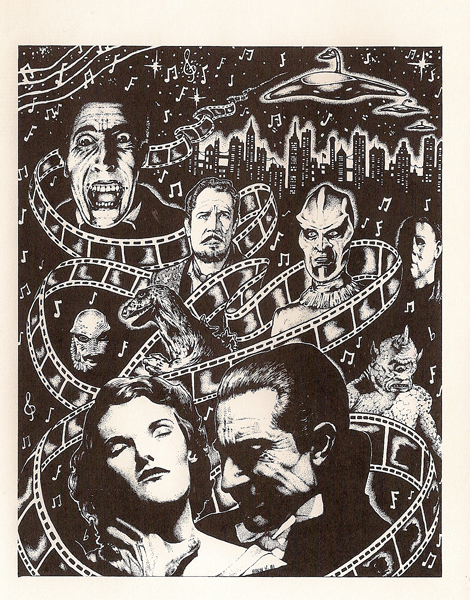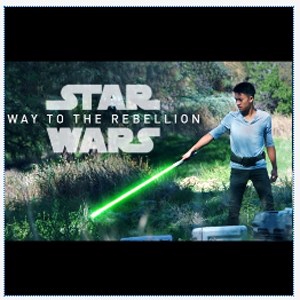 George Shaw scores STAR WARS fan-film,
George Shaw scores STAR WARS fan-film,
“WAY TO THE REBELLION”
Interview by Randall D. Larson
Produced by Wong Fu Productions 13-minute short film, WAY TO THE REBELLION – A STAR WARS FAN FILM, is set alongside the timeline of A NEW HOPE and focuses on what events make average people follow the Rebellion instead of the Empire. By building on STAR WARS lore, including the search for a crystal that could be used for creating lightsabers, WAY TO THE REBELLION expands on the trilogy’s world – and the same can be said about George Shaw’s score that is an ode to the brilliant music of John Williams.
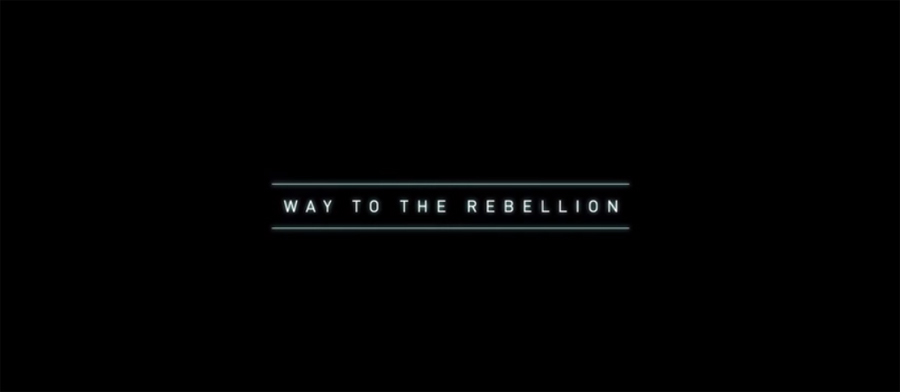
Having scored over 15 feature films, composer George Shaw still finds time to write music for shorts and viral YouTube videos – in total these have amassed over 150 million views. Some of his best known works in the genre include ODE TO GEEKS, co-written with Stan Lee, and the STAR WARS MUSICAL video. ]
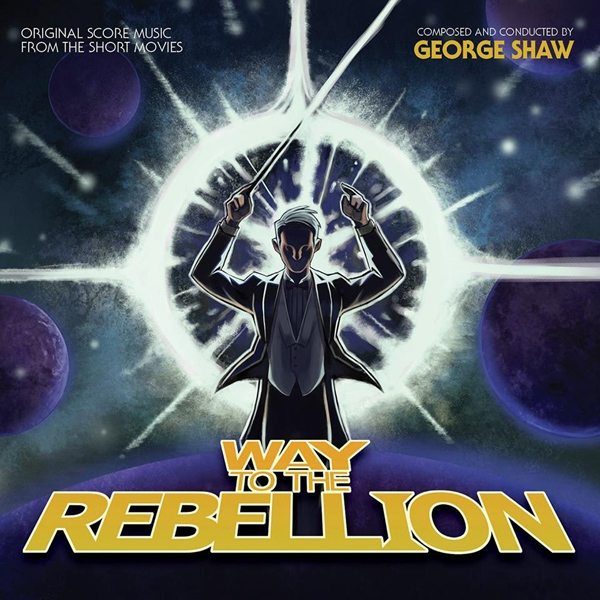
MovieScore Media has released Show’s soundtrack via digital download and on CD. The first five tracks are from WAY TO THE REBELLION, while the remaining 13 are from a variety of other sci-fi themed short fan films that Shaw has scored or contributed to, including FIRST ASIAN JEDI, a Star Wars parody about an Asian American experience, the romantic comedy short DEALBREAKERS: SHE’S NEVER SEEN STAR WARS?! in which a girl pretends to know all about the franchise for her date’s sake, as well as STAR TREK WARS which merges the styles of the two cinematic juggernauts.
Interview begins after video below.
Watch WAY TO THE REBELLION HERE:
Q: You’ve scored dozens of films, shorts and feature-length films, since 2001. How did you become involved with Wesley Chan and his STAR WARS-oriented fan films?
George Shaw: I actually met Wesley Chan 10 years ago at a film festival. I was already a fan of his work from an early viral video he had done with Wong Fu when they were in college. So I started collaborating with Wong Fu on a web series called JUST A NICE GUY, and have scored videos of theirs on and off throughout the last decade. And being such the fan boy that I am, especially when it comes to STAR WARS, Wesley knew that I would be super excited to work with him on a series of three Star Wars short films, including WAY TO THE REBELLION, THE FIRST ASIAN JEDI, and DEALBREAKERS: SHE’S NEVER SEEN STAR WARS?!
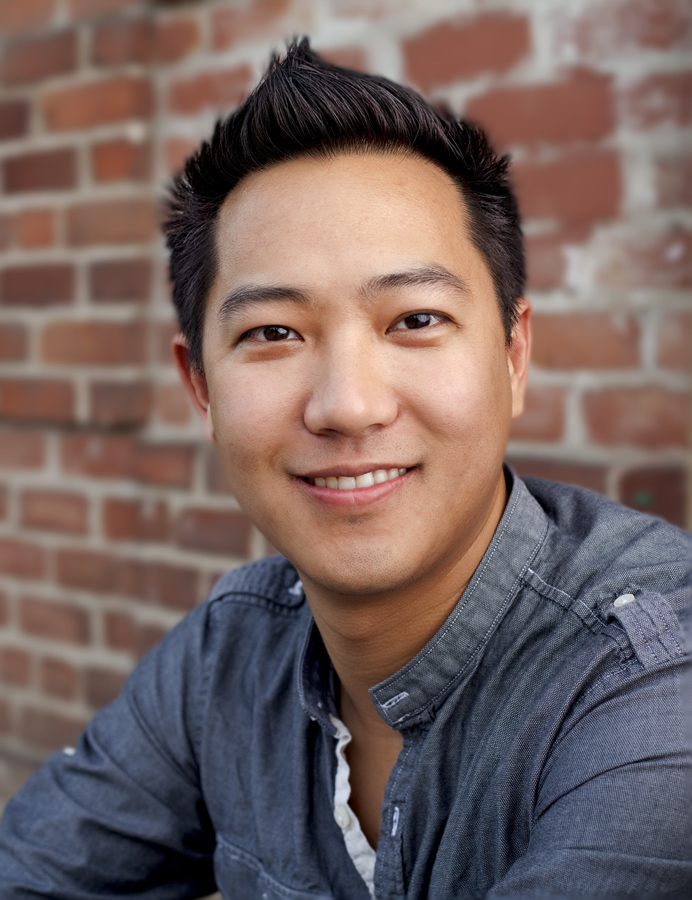
Q: Obviously scoring a fan film in the STAR WARS universe comes with some presuppositions concerning music – fans want it to sound like STAR WARS but obviously you can’t use the actual STAR WARS music without an expensive licensing fee. With this in mind, how did you develop the score for WAY TO THE REBELLION, and what was your technique in composing some sound-alike themes?
George Shaw: I love John Williams. He is the reason I became a composer. So with my obsession for STAR WARS (I really love the wealth of stories in the STAR WARS universe outside of the movies), as well as my obsession for John Williams’ STAR WARS scores, I felt confident in writing music that would fit the universe. I knew that using certain melodic intervals, harmonies, and orchestrations, I could capture the overall feel of STAR WARS music while creating something completely original.
I also studied as much of John Williams’ music I could get my hands on. Since much of WAY TO THE REBELLION took place in a forest setting, during events of EPISODE 4: A NEW HOPE, I based much of the feel on the original trilogy, in particular, the action scene takes inspiration from the Forest Battle music in RETURN OF THE JEDI.
Q: How closely did you work with director Wesley Chan in determining the feel of the music and its placement in the film?
George Shaw: Having worked for so many years with Wesley, he trusted in my approach to the music. We had some discussions, but I mostly composed my demos and sent them his way and he only asked for very minor changes. Given what big STAR WARS fans we both are, we mostly were having a lot of fun with these projects, and every step of the way Wesley was giving me wonderful praise for my work!
Q: How did you want to enhance the film’s storyline and its place in the STAR WARS universe, with a cohesive, authentically-styled and energetic score?
George Shaw: I’ve dreamt of doing a STAR WARS score for years. I wanted to bring as authentic a sound as possible, with the requisite hummable/memorable themes. I remember when watching THE FORCE AWAKENS in theaters, I was inspired by the “March of the Resistance” and came up with my “Rebellion” theme (prominently heard on track 5, “Join the Rebellion”).
Almost a year later, ROGUE ONE came out (about half a year after the release of WAY TO THE REBELLION), and I was amazed that my “Rebellion” theme has a striking similarity to the first few bars of Michael Giacchino’s Jyn Erso theme.
Amazingly, the stories of both films also touch on Kyber crystals, which are the power source of lightsabers and the Death Star. Wesley and I both geeked out over that, and how cool it was that we released something prior to Rogue One that has some similar thematic elements! Disney and Lucasfilm really should hire us to make a STAR WARS film!
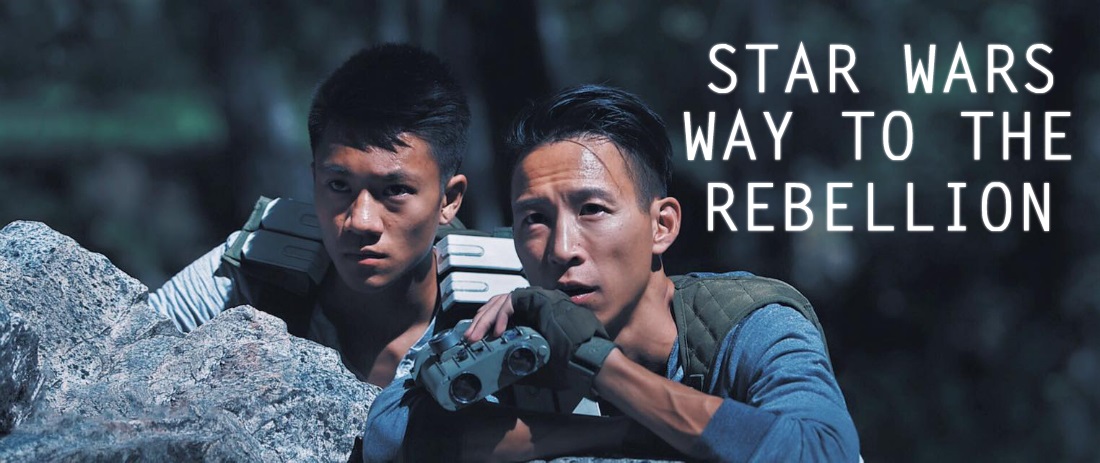
BRANDON SOO HOO AS KIT, CHRIS DINH AS MEREK, FROM WAY TO THE REBELLION
Q: At 13 minutes, WAY TO THE REBELLION is one of the longest short films you’ve scored. With the increased length, how were you able to expand and develop your score thematically and progressively and/or provide a music arc for the film or its characters from beginning to end?
George Shaw: With any project, regardless of length, I focus on creating themes and then scoring the individual scenes from moment to moment. The process doesn’t change much even if I’m scoring a feature-length film. Obviously with a shorter film, it’s less work and fewer themes to create. Beyond that, the dramatic arc follows along with the story.
With WAY TO THE REBELLION, the film opens with a piece of source music, which I imagined as a romantic classical piece of space piano music. And immediately jumps into tense and mysterious action music when the TIE Fighters fly overhead. We are thrown into a world where the empire is in close vicinity to our heroes. I introduce my knock-off of the Force theme when one of the Kyber crystals is shown.
At the mention of the empire expanding, I introduce an Imperial motif that’s partially based off of the notes from the Death Star theme in A NEW HOPE, but partially riffing off of the rhythm of the Imperial March.
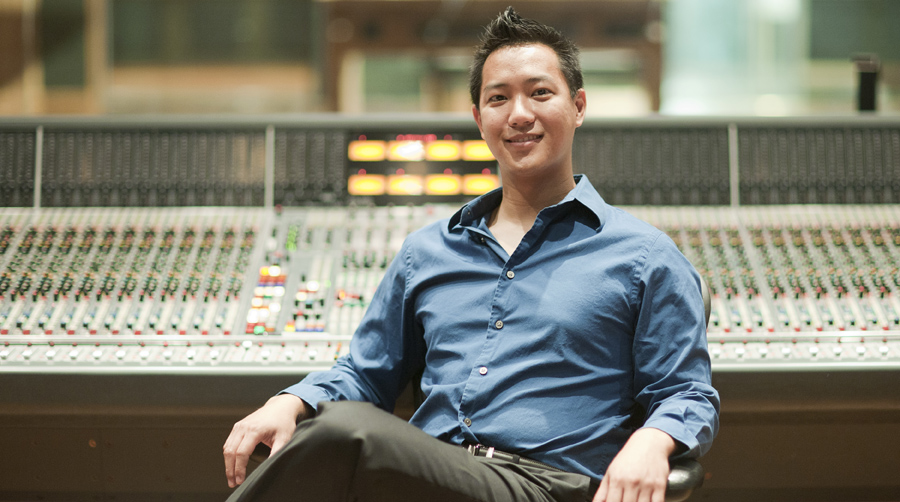
The following scene introduces Rina’s theme, which I originally had written for the opening as classical “space piano” source music, since the character is thinking about her. But I ended up using it in this scene as a sort of star-crossed love theme. It’s sweet but has a tinge of sadness in a minor key. This is followed by the assembly of a lightsaber, where a full statement of my force theme comes in (which you can also hear in some of the music I composed for another fan film, STAR TREK WARS). My rebellion theme is introduced next, planting seeds for our heroes turning towards joining the rebel alliance.
Our heroes encounter storm troopers outside a mining facility and we get statements of my Imperial motif. The situation escalates into a blaster battle, where rousing action music ensues with fragments of the rebellion theme peppered throughout.
A climactic explosion takes place and a haunting and sorrowful version of the Rebellion theme merged with Rina’s theme from English Horn is heard as our hero tries desperately to get in touch with Rina. As they begin to realize the truly sinister reach of the Empire and vow to join the rebellion, the Rebellion theme swells into a full orchestral crescendo.
Q: With the story taking place on a planet near Alderaan at the time of its destruction by Grand Moff Tarkin in the Death Star, how have you referenced John Williams’ music during that time frame in STAR WARS?
George Shaw: (Spoiler alert! Watch the video on YouTube [above] before you read below). It was really cool to find out that Wesley’s short film takes place during the events of A NEW HOPE, when the death star destroys Alderaan. We see the explosion from our characters’ point of view from a nearby planet. During that exact moment, I use the same 4 note motif to link the moments from both films.
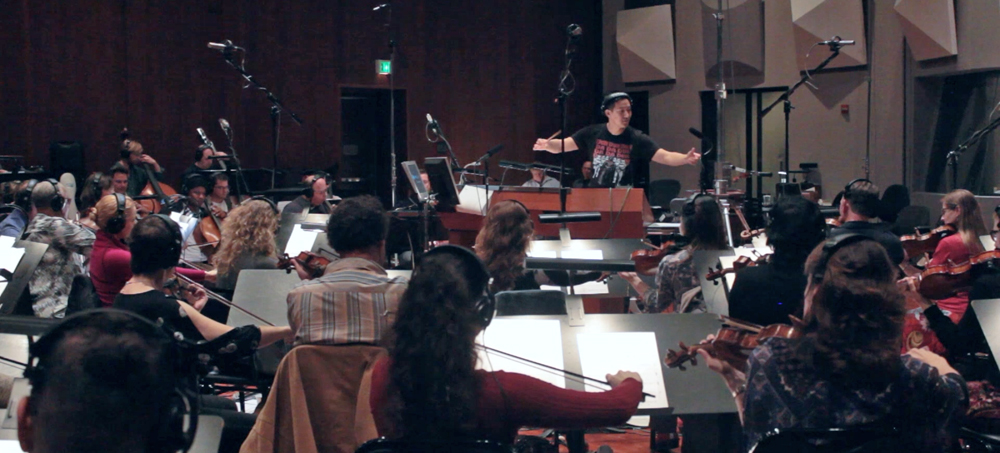
GEORGE SHAW CONDUCTING PORTIONS OF HIS WAY TO THE REBELLION SCORE AT WARNER BROTHERS
Q: I understand you had the ability to record four cues using a live orchestra, one of which was for the climax of another film you scored for Wesley Chan. Where were these recorded and with how large an orchestra?
George Shaw: We didn’t have a budget to record a live orchestra, so I originally composed the music entirely using sampled virtual instruments. The opportunity came up to record for 15 minutes on a shared session with the CMG Recording Orchestra at Warner Brothers Eastman Scoring Stage. I spent every last penny of my fee to record those four cues (one from THE LAST ASIAN JEDI, and three from WAY TO THE REBELLION) with the live 62 piece orchestra. I’m incredibly grateful to Karen Garrity, the music contractor for putting together such an incredible orchestra!
Though the original orchestrations in my sampled music were composed with an 80-90 piece orchestra in mind, which I imagine is around what John Williams has to work with on the STAR WARS films. I had more standard symphonic numbers like double woodwinds, 4 horns, 3 trumpets, timpani and 2 percussion, I filled in some of the missing parts with sampled instruments. Mostly parts like 3rd flute, English Horn, contrabassoon, bass clarinet, 4th trumpet, expanding/sweetening the horn and string sections, and adding in lots of percussion.
Watch some footage of the recording session here
Q: What samples and synths did you use to record the digital elements of the score, and what’s your technique of working with them to achieve such an authentic symphonic feel?
George Shaw: I mostly use samples from a company called Cinesamples, I was actually their first customer buying and using their very first product. I knew Michael Patti and Michael Barry, the founders of Cinesamples, when we were all students in the film scoring program at USC. I love what they’ve done, by recording samples of the different instruments and orchestral sections at the Sony Scoring Stage, the same recording studio where THE FORCE AWAKENS was recorded (by legendary score mixer, Dennis Sands who has recorded and mixed for so many of my favorite A-list composers). You really get that authentic Hollywood sound along with a similar room sound to the Warner Brothers stage. Really makes it easier to blend the elements digital and live elements together.
Of course I owe big thanks to Adam Michalak who recorded the live orchestra at Warner Brothers, who also happened to be the recordist at Sony Scoring Stage when John Williams recorded A FORCE AWAKENS. Also my eternal gratitude goes to John Rodd, my mixing/mastering engineer who also mixed Gordy Haab’s music from EA’s STAR WARS: BATTLEFRONT game. John took my mixes and gave it a final polish to really achieve a big orchestral STAR WARS sound. I feel so lucky to have worked with the actual guys who helped make the sound of STAR WARS in recent projects.
Q: As a fan film, which are not always viewed positively by the studio holding ownership of the concept and characters, what kind of response does a film like this get, and how would you like these kinds of films – and their music – to be regarded and/or legitimized by filmgoers/STAR WARS fans?
George Shaw: I think the biggest hope with making a fan film is just that it gets seen by fans. Fortunately with the STAR WARS franchise, Lucasfilm has always been open and supportive of fan films, even going as far as to having a Fan Film Awards. I remember in my college years, I would download STAR WARS fan films because I just couldn’t get enough STAR WARS.
I myself wrote and produced my own fan film, STAR WARS MUSICAL, which spoofs A NEW HOPE as a Disney musical, mashing up the themes of John Williams with Alan Menken’s style and tunes from Disney animated musicals. I know it’s a lot of work and passion to get something like that made. Fortunately with STAR WARS MUSICAL, we’ve had pretty good response from fans, and I’m excited to be in post-production on the sequel, STAR WARS MUSICAL: EMPIRE’S NEW GROOVE, due to be out by December! Fingers crossed we make it in time, it’s difficult when there’s no money to do things and you’re relying on favors and passion.
For a more serious project like WAY TO THE REBELLION, I hope people can enjoy it as an extension of the existing STAR WARS universe, and appreciate the passion and craft that it takes to make a fan film, including the music, which isn’t always given as much attention in fan films. I do these projects because I love STAR WARS, and dream of one day composing music on an official STAR WARS project!
Links:
Composer – www.georgeshawmusic.com
Soundtrack Album [& music samples]: http://moviescoremedia.com/way-to-the-rebellion-george-shaw/
Filmmakers – you tube: https://www.youtube.com/channel/UCutXfzLC5wrV3SInT_tdY0w
Filmmakers – web: https://www.wongfuproductions.com/
Star Wars Musical: http://starwarsmusical.com
Watch FIRST ASIAN JEDI: https://www.youtube.com/watch?v=SxMEhhXMwHw
Watch DEALBREAKERS: SHE’S NEVER SEEN STAR WARS?!: https://www.youtube.com/watch?v=YXop-pMPqWQ&t=2s



